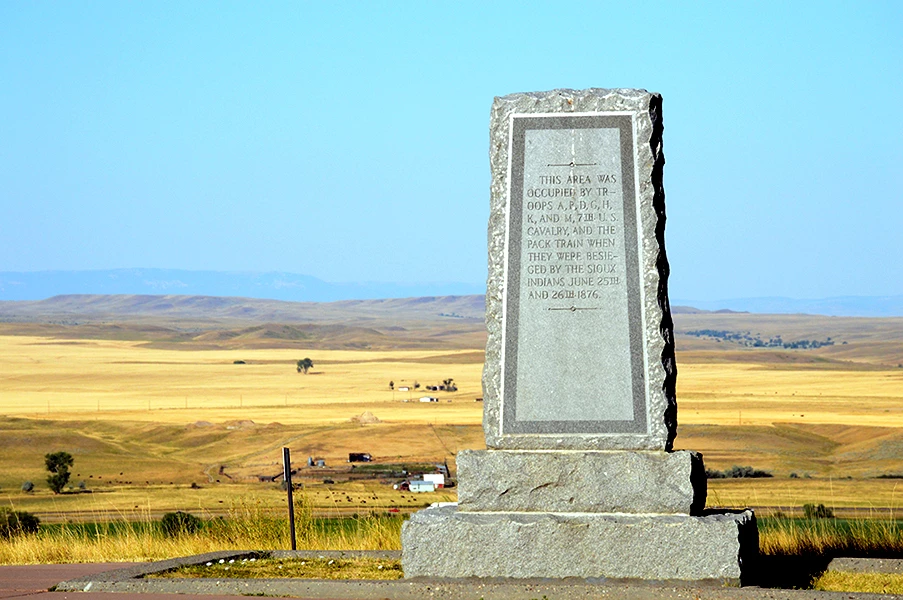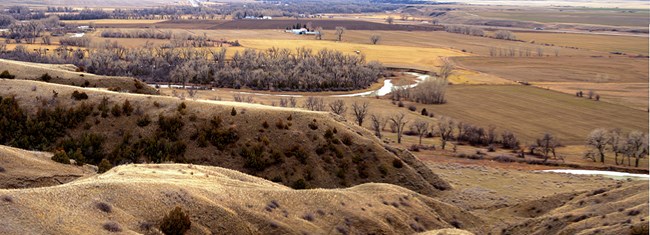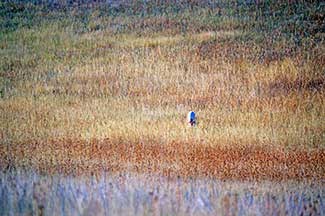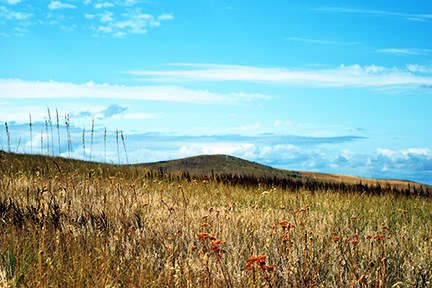
NPS S. Smith At approximately 4 p.m. on Sunday, June 25, 1876, the battered remnants of Major Marcus A. Reno's three companies reached these bluffs following their disastrous attack in the valley. The warriors who had pursued Reno's retreating command left the pursuit and went downstream. Reno was soon joined by Captain Frederick W. Benteen's battalion of three companies (125 men) and the pack train with its escort of 130 men. About this time gunfire was reported to the north, in the direction of Custer's probable advance. Elements of Reno's force, in an attempt to open communication with Custer, proceeded to Weir Point, about one mile north. Confronted there by an overwhelming number of Lakota and Cheyenne, the cavalry was forced back to this site. Here Reno and Benteen established a defense perimeter at about 7 p.m. when warriors began firing a hail of bullets into the soldiers' position. 
NPS S. Smith Reno's Retreat Looking down the ravines toward the Little Bighorn River, you can see where Major Marcus Reno led Companies A, G, and M back across the river in retreat from where he earlier attacked the upstream end of the Indian encampment. Hundreds of warriors attacked and flanked Reno's men, forcing them to take a defensive position in the timber. The retreat to the bluffs followed. The defense line at this position was occupied by Captain Thomas H. French's M Company. McDougall's B Company defended this area on June 26, when French's company was summoned to support Benteen. Captain French's Reinforcements Warriors took up positions close to the side of the defense area during the night of June 25 and the early morning of June 26. Captain Frederick W. Benteen asked for more men, so Captain French brought M Company over to reinforce this segment of the line. Warriors with rifles were in positions behind the hills and ridges to the west of this site. 
NPS S. Smith Field Hospital The only surviving doctor, Assistant Surgeon Henry R. Porter, collected the wounded and set up an improvised field hospital in the site marked in the depression south of Reno-Benteen Memorial. Many of Reno's men had been wounded in the valley fight and retreat, and warrior firearms were taking their toll as other men were hit along the line. 
NPS B. Flynn Sharpshooter Ridge Lakota and Cheyenne warriors occupied vantage points all around the Reno-Benteen position. The warriors were armed with a variety of different weapons. A sharpshooter on the ridge 500 yards away made life extremely hazardous for the troopers lying along this portion of the line. On the evening of June 26, the Lakota and Cheyenne broke camp and moved off toward the Bighorn Mountains, seen in the distance to the south. The men on Reno Hill were relieved but hesitant to let their guard down. Unsure of why the Indians had suddenly departed, many soldiers suspected a trick, and spent another night on the bluffs. Early the next morning, the exhausted soldiers spied a large dust cloud in the river valley to the north, and soon learned that General Terry, with Colonel Gibbon's infantry and cavalry column, was marching up the river. |
Last updated: April 23, 2025
